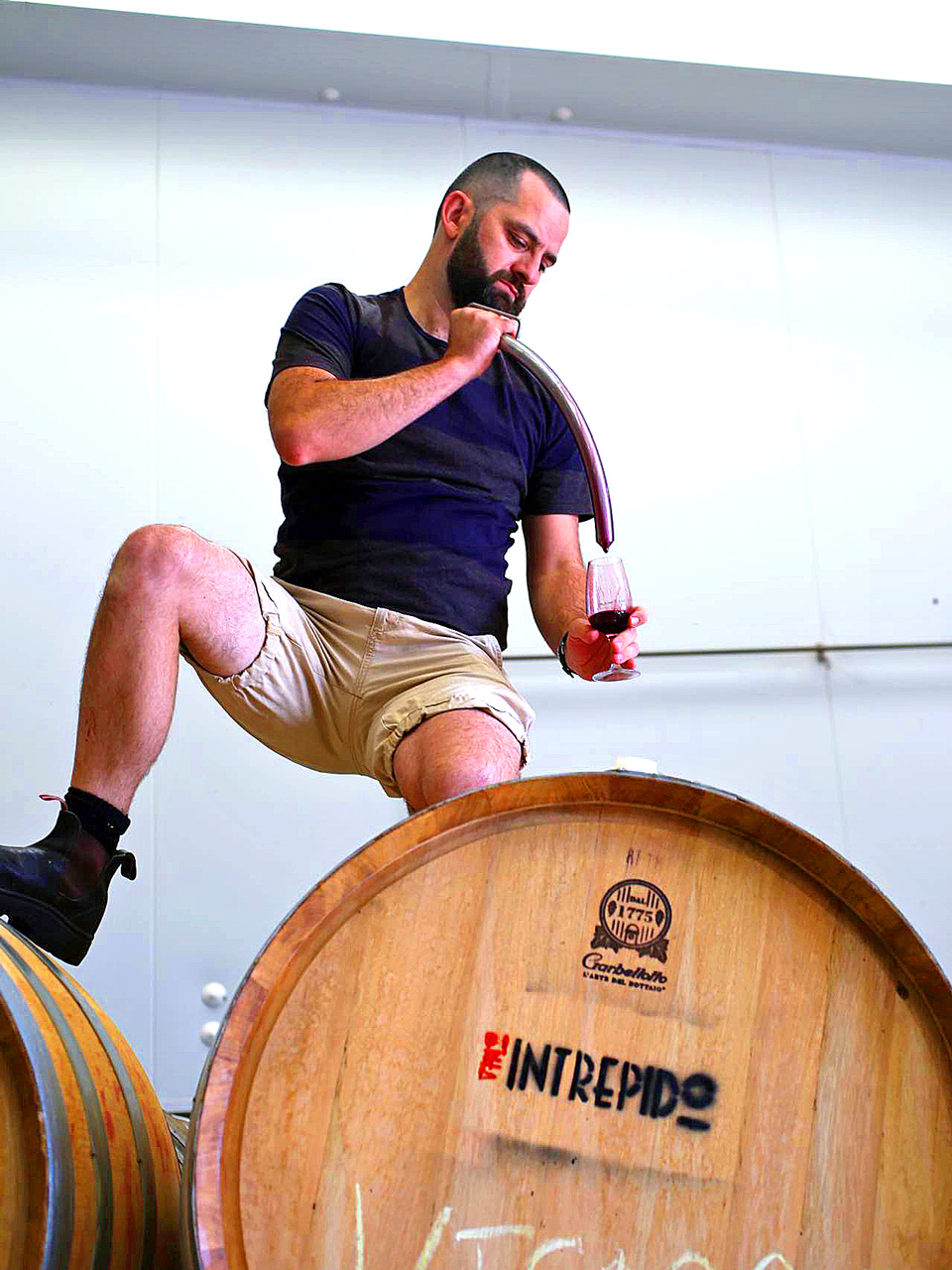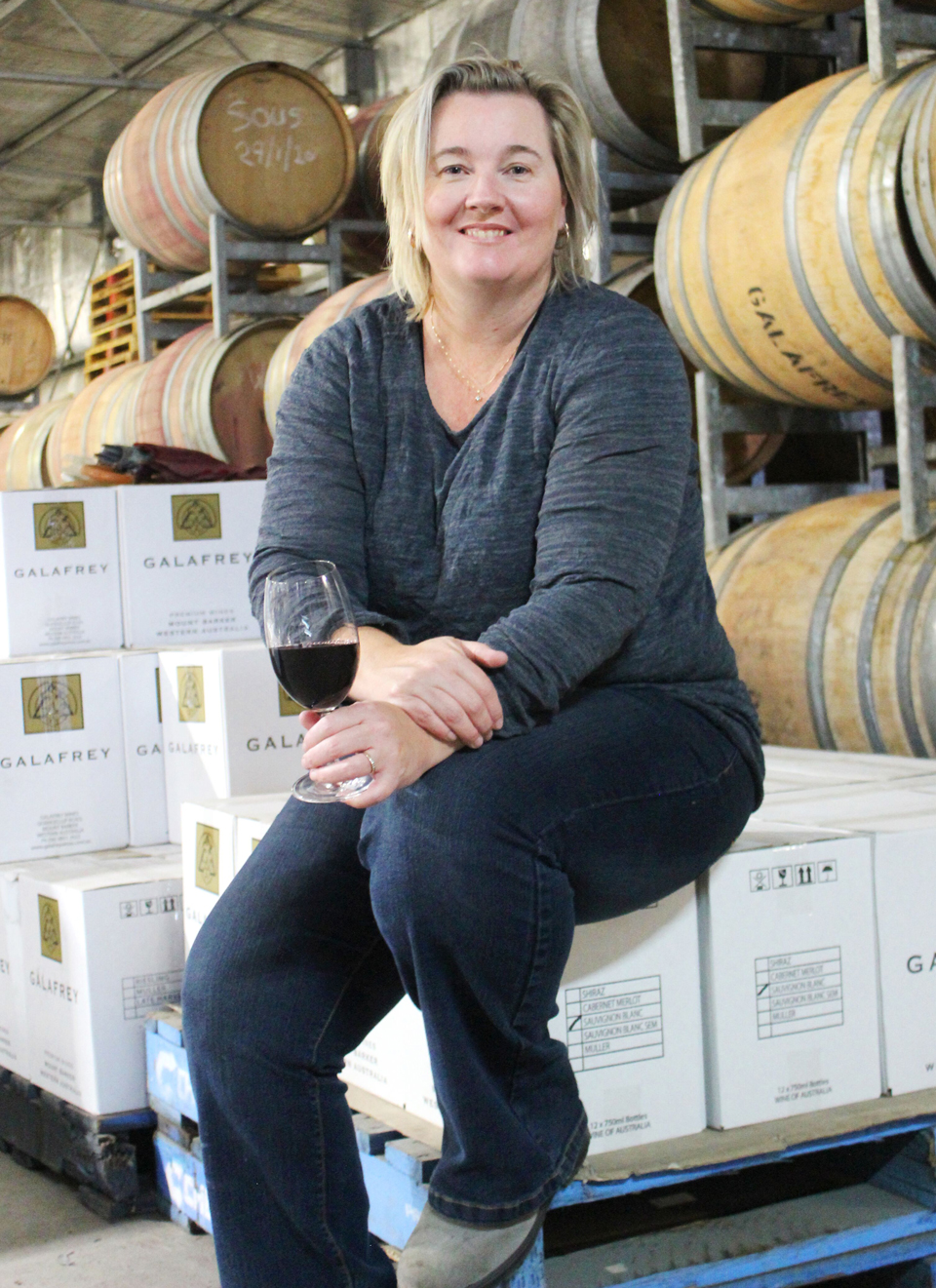Si Vintners was started by Sarah Morris and Iwo Jakimowicz in 2006, but it was a move to their own Margaret River vineyard and an immersion in biodynamic farming that was the turning point for the pair. Working with the region’s classic varieties – chardonnay, cabernet sauvignon, semillon, sauvignon blanc – as well as some of the region’s oldest pinot noir vines, the Si Vintner wines veer from the avant-garde, like a skin-contact sauvignon blanc dosed with a little cabernet to make a rosé, to straight varietal expressions that verge on the classic. Whatever the wine, all are lo-fi, biodynamic and bottled with the scantest dose of sulphur. Morris and Jakimowicz were Young Gun finalists in 2013.
Born in Poland, Jakimowicz moved to Perth in 1987, aged eight. Straight from high school, he studied viticulture and oenology at Curtin University. And though that may sound like a clear-headed vocational choice, he maintains that it was more that he wanted to live (or rather surf) in Margaret River, and the course stipulated work experience there. Having no wine knowledge or established interest, he took the second year off to get some real-life understanding.
Jakimowicz headed to Red Hill Estate on the Mornington Peninsula in 2000 to do his first vintage, and has been working two every year since, here somewhere and somewhere in the northern hemisphere. That course at Curtin took some years to complete, but it was there he became friends with Morris who was studying the same degree. The pair went their separate ways, but they remained friends and in contact.
While Jakimowicz did his dual vintages, including in Italy, Switzerland and South Africa, Morris spent several years at Torbreck. She also ventured to Portugal and France before taking a job working in Aragon and Catalonia, Spain. She alerted Jakimowicz to a vacant role in the same company, and they worked the 2005 vintage together. The pair stayed there for eight years, starting with a 120-tonne harvest and ending up working across a substantial operation and millions of litres of wine.
The pair became a couple over that time, and they would typically spend seven months in Spain, then come back for vintage, flying back and forth for blending in between. In 2008, they found a mature vineyard (planted 1978) for sale in Rosa Glen, Margaret River. The price was well out of their reach at the time, but by 2010 it had dropped enough to be just affordable, and a deal was struck.
That was a year before they also decided to buy some plots of vines in Spain, dotted across the mountains near the village of Acered, in Aragon. They now have five hectares of mostly ancient vines spread across seven sites. The pair fly back each year for harvest and to make the wines, then return to blend and bottle, with two local brothers tending to the vines and wines while they’re gone.
Back home, once they bought their Rosa Glen property, they immediately implemented organic practices, then pivoted to biodynamics. Careers spent making wine for others, with clear economic parameters in place, had impressed on them that they wanted to make wine differently, wine that wasn’t pushed into shape or tricked up. That philosophy wasn’t inspired so much by the swelling natural wine movement at the time, but rather by personal discovery, and that process was constantly evolving.
The first Si Vintners wine was made by the pair back in 2006 in a friend’s shed, but moving to their own property and being about to farm organically was a critical development. It very much became about the land, though they continued to source fruit for some time until the vineyard was where they wanted it to be. Now they have concentrated their operation to only come off their own vines. A bit less to go around, but from the ground to the glass, everything is managed to their ideal specifications.
The wines fit the natural wine mantra down to the letter, with organic fruit turned to wine with no additions bar sulphur at bottling, and they’d be happy to do without that too, when possible. The wines are raised in either barrels, concrete eggs or steel. They employ skin contact on some whites, raise some wines under flor yeast and employ extended macerations on some reds, but they make varietal cabernet sauvignon, chardonnay, pinot noir and chardonnay, too. For them, it is not so much about style but coaxing out expressions that reflect place, and a place that has been cared for lovingly.




